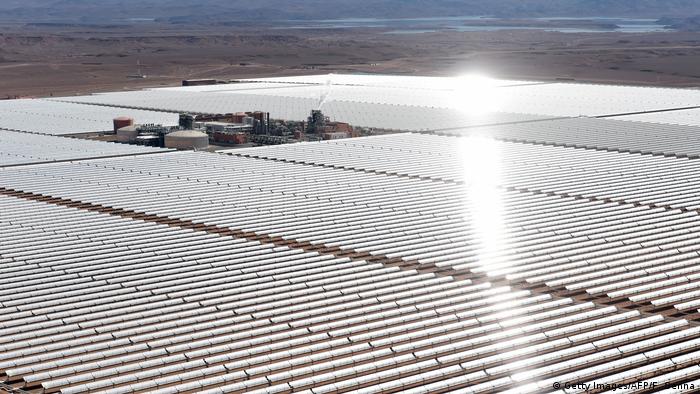Environment & Energy
Related: About this forumElmed interconnector aims to bring solar power from the Sahara to Europe
https://www.dw.com/en/elmed-interconnector-aims-to-bring-solar-power-from-the-sahara-to-europe/a-48843725The situation in North Africa is increasingly difficult to read, like in Algeria, or even menacing when you look at Libya. But Europe is hoping to energize ties with the difficult region through a renewable energy link.

It's been a long-held European dream to shore up its supply of renewable energy with solar power from sun-rich North Africa. Now, Italy and Tunisia have taken a first step to make this dream come true, as they signed an intergovernmental agreement for the development and joint construction of a 600-megawatt (MW) electricity link.
On April 30, the governments of Italy and Tunisia signed a deal to lay an underwater power cable between Partanna, Sicily and El Haouaria, Tunisia, aiming to integrate the EU's electricity grid with that of North Africa.
A long time in the works, Italian transmission company Terna and Tunisian gas and electricity group STEG have been developing the so-called Elmed Mediterranean power interconnector since 2003.
…
LiberalArkie
(15,716 posts)OKIsItJustMe
(19,938 posts)Or, is 600MW sufficient for now?
Thekaspervote
(32,771 posts)We could be doing it to if it weren’t for the idiot Repugs fighting renewables
OKIsItJustMe
(19,938 posts)rurallib
(62,418 posts)One thing about oil - you can see it and figure out how much you use fairly simply. I always need to look at a calculator if sorts to understand what the electricity means.
From the union of concerned scientists:
https://www.ucsusa.org/clean_energy/our-energy-choices/how-is-electricity-measured.html
How is Electricity Measured?
Understanding watts, megawatts, kilowatt-hours, and more
Watts are a measurement of power, describing the rate at which electricity is being used at a specific moment. For example, a 15-watt LED light bulb draws 15 watts of electricity at any moment when turned on.
Watt-hours are a measurement of energy, describing the total amount of electricity used over time. Watt-hours are a combination of how fast the electricity is used (watts) and the length of time it is used (hours). For example, a 15-watt light bulb, which draws 15 watts at any one moment, uses 15 watt-hours of electricity in the course of one hour.
Kilowatts and kilowatt-hours are useful for measuring amounts of electricity used by large appliances and by households. Kilowatt-hours are what show up on your electricity bill, describing how much electricity you have used. One kilowatt (kW) equals 1,000 watts, and one kilowatt-hour (kWh) is one hour of using electricity at a rate of 1,000 watts. New, energy-efficient refrigerators use about 300-400 kilowatt-hours per year. The typical American home uses about 7,200 kilowatt-hours of electricity each year [1].
Megawatts are used to measure the output of a power plant or the amount of electricity required by an entire city. One megawatt (MW) = 1,000 kilowatts = 1,000,000 watts. For example, a typical coal plant is about 600 MW in size.
Gigawatts measure the capacity of large power plants or of many plants. One gigawatt (GW) = 1,000 megawatts = 1 billion watts. In 2012, the total capacity of U.S. electricity generating plants was approximately 1,100 GW [2].
hunter
(38,317 posts)These solar and wind energy schemes are the best thing that ever happened to the natural gas industry.
Natural gas extraction, distribution, and electric power generation are among the largest industrial projects on earth.
The perception that gas is "clean," especially in conjunction with the solar and wind industry it supports, will destroy whatever is left of the natural environment on this planet as we know it, and ultimately the high energy industrial consumer economy so many affluent people now enjoy.
International Energy Outlook 2016 (IEO2016)
https://www.eia.gov/outlooks/ieo/pdf/nat_gas.pdf
We are screwed.
OKIsItJustMe
(19,938 posts)Assuming that there is X demand, and Y is provided using solar or wind, that is still Y which is not provided using fossil fuels.
Yes, there may be X-Y provided by fossil fuels. Would you prefer that it all be provide by fossil fuels?